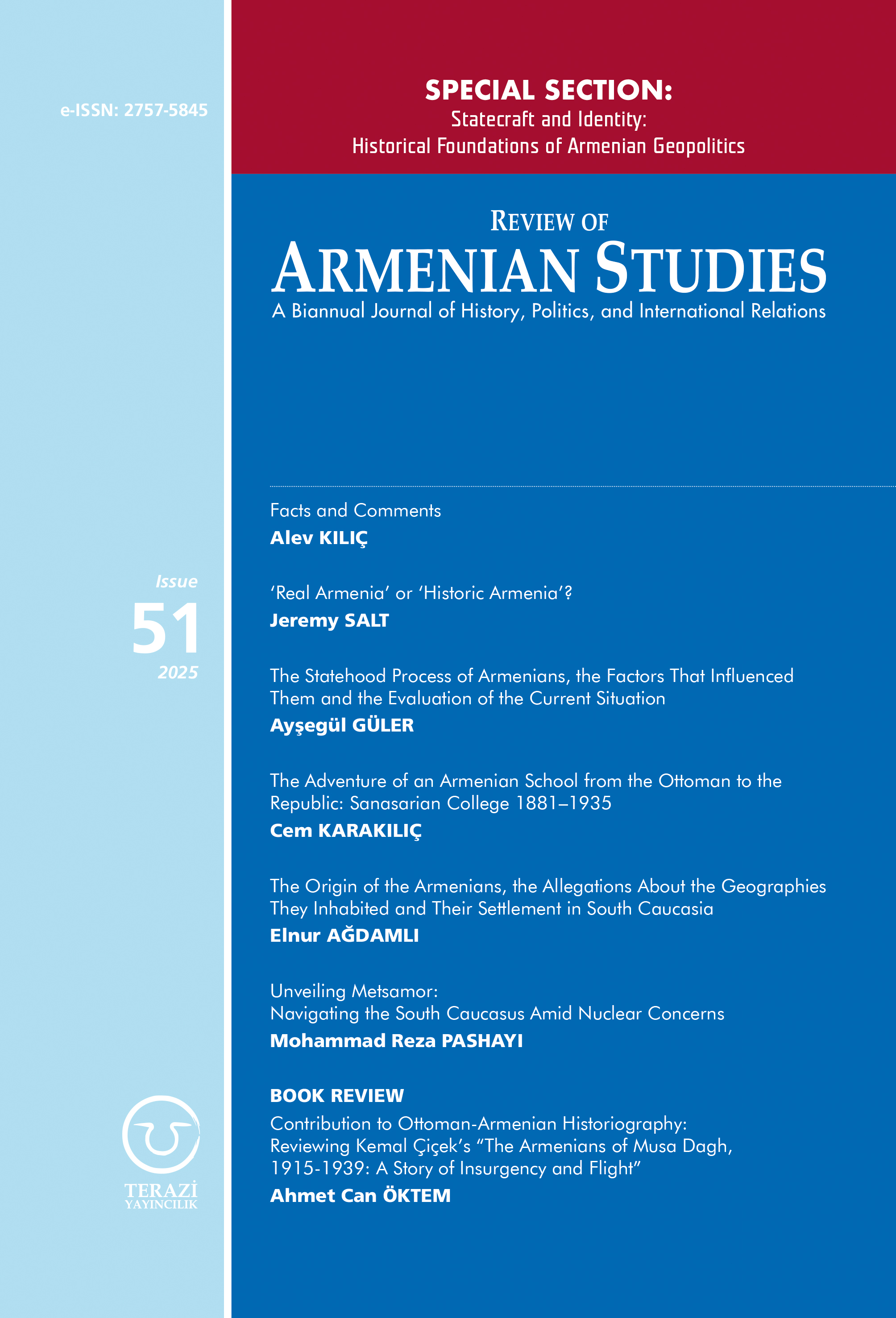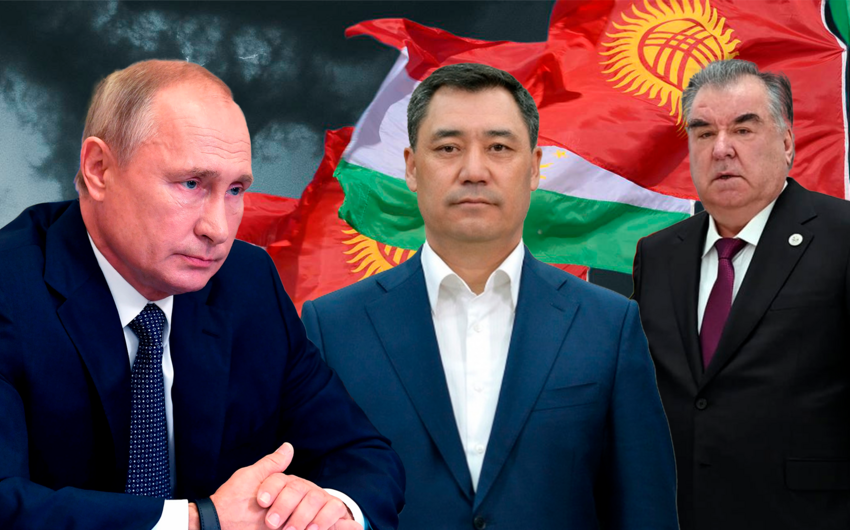
After the collapse of the Soviet Union, a series of problems (including border issues) arose between Central Asian countries. Some of the factors that make it difficult to solve the border issues include the presence of enclaves, the parties putting forward conflicting Soviet maps, and the kolhozes (collective farms) located in disputed lands stretching across different countries. Kazakhstan and Turkmenistan had relatively the least problems in determining borders with neighboring states. Kazakhstan solved its border problems with Kyrgyzstan in 2001, with Uzbekistan in 2002, with Turkmenistan in 2017, and a significant part of Turkmenistan's border demarcation work with Kazakhstan and Uzbekistan was completed in 2017.
However, Kyrgyzstan and Tajikistan have not been able to solve their border problems for a long time. Approximately one third of the Kyrgyz-Tajik border is still undetermined, triggering periodic conflicts in the border areas. In this respect, more than 150 conflicts have occurred in the last 12 years.[1] The two sides put forth maps and documents from different periods of the Soviet Union concerning the demarcation of the borders. In this enclave-laden region, the said parties resort to preventing border crossings in times of increased bilateral tension, which exacerbates the existing situation. Problems with shared water channels and infrastructures, the corruption of border officials, and the fact that the region is a transit point for drug trafficking and smuggling adds significant complications to the situation.[2]
Violence in the region escalated especially in the last two years. The said violence went beyond local conflicts when the armed forces of the two countries became involved in April 2021 and September 2022. In the Batken conflict that started in April 2021, fights broke out between the local residents at the Golovnoy water intake station from which the water of the Isfara River is distributed. The conflict escalated to an unprecedented level for the region when army units were quickly deployed with heavy weapons, rockets, and mortars.[3] The conflict resulted in more than 30,000 residents of the region being evacuated and 34 people losing their lives.[4] The clashes in September 2022 caused 62 deaths and led to 140,000 people being evacuated from the region.
These events have been described as border conflicts or border clashes. Researcher Julia Emtseva argues that the handling of events around the concept of "border conflicts" has been to prevent the situation from escalating, but that the heavy weapons and military personnel captured in video footage points to a planned military operation.[5] While neither side claimed responsibility for the first attack, the fact that the parties did not send an official Article 51 letter to the UN Security Council justifying their military actions casts a shadow over the legality of the justifications for self-defense. The situation in the region is not sufficiently on the agenda because of the shadow cast by the Ukraine War. Emstva states that labeling events as “border conflicts” creates the illusion that the issue does not require a serious reaction from the international community, which may cause the mutual escalation of violence.[6] The Kyrgyz Prosecutor General's Office assessed the actions of Tajikistan as military invasion within the scope of “Crime Against Peace”. However, the attempt to initiate an investigation at the International Criminal Court did not receive support from the Kyrgyz President Sadyr Japarov in line with his statement that a solution would be reached through diplomatic channels.[7]
Both Kyrgyzstan and Tajikistan are members of the Shanghai Cooperation Organization (SCO) and the Collective Security Treaty Organization (CSTO). Presidents Emomali Rahmon and Sadyr Japarov met at the SCO Heads of State Summit in Samarkand in September 2022, but they immediately left the summit when clashes broke out on the border. All these have led to the questioning of the effectiveness of SCO and CSTO in conflict resolution and dialogue formation, and brought forward some comments that Russia's influence in the region has decreased.
It is known that the authoritarian leadership of Emomali Rahmon, who has been the President of Tajikistan since 1994, is supported by Russia. The 201st Division of the Russian Army, located on the Tajikistan-Afghanistan border, has been an important guarantor of Tajikistan's security. Russia's listing of the Tajikistan Islamic Renaissance Party as a terrorist organization and the Tajik President being awarded with the Order of Merit are also indicators of good relations between the parties. Despite this, first due to the effects of COVID restrictions, then the outbreak of the Ukraine War and sanctions against Russia that led to a decrease in remittances from Russia (which accounts for over a quarter of Tajikistan’s GDP)[8], and the Tajik government’s risk of default and the fact that Rahmon instructed the public to stockpile two years’ worth of food[9] due to the crisis has increased the instability in Tajikistan.
Tajikistan comes first and Kyrgyzstan comes second among the post-Soviet states with the lowest per capita income. This situation creates the understanding that the governments of both sides are in search of external enemies to provide legitimacy due to falling living standards and signals that the resolution of conflicts through dialogue may fail. Kyrgyzstan has purchased Bayraktar TB2 armed UAVs from Türkiye and Iranian-made Ebabil-2 UAV production facility has opened in Tajikistan. It is possible to say that increasing militarization may fuel tensions between these two countries.
The reason why Russia and the organizations Russia leads are not sufficiently involved in establishing dialogue on this issue is that playing a facilitating role in the ceasefire or peace talks processes is less costly and risky for Russia.[10] While Russia is focused on the war in Ukraine, it does not want to lose its influence in Central Asia. The unstable situation on the Tajikistan-Kyrgyzstan border may pave the way for Russia to intervene in the region in the future. It can be expected that Russia or the organizations it leads will be included in the ceasefire process after a possible conflict, which was exemplified by the deployment of Russian peacekeepers in the Caucasus as per the 2020 Nagorno-Karabakh Armistice and the involvement of CSTO in the January 2022 events in Kazakhstan.
As for Kyrgyzstan's attempts to train civilian militias and deploy them at the borders[11], these may lead to a worsening of the situation in the region where instability prevails and trafficking is common. (especially drug trafficking) On the Kyrgyzstan-Tajikistan border, in the Fergana Valley region that has a considerable population, local residents are being forced to migrate due an insecure environment. Researchers state that they are observing an atmosphere of great insecurity and hostility in the region. Steps to be taken by the governments will play a primary role in overcoming this and building trust in the region. It is also important to bring this issue to the attention of the international community in order to guide the parties towards acting with common sense.
*Photo: Report.az
[1] “Nadyrbek Abazbekov, “Kyrgyz-Tajik border disputes: reasons and ways of solution”, CABAR, March 18, 2021, https://cabar.asia/en/kyrgyz-tajik-border-disputes-reasons-and-ways-of-solution
[2] Ibid.
[3] “Conficts over water and water infrastructure at the Tajik-Kyrgyz border A looming threat for Central Asia”, Water, Peace and Security, https://waterpeacesecurity.org/files/68
[4] “33,388 Kyrgyzstanis evacuated from conflict zone in Batken”, Trend News Agency, May 2, 2021, https://en.trend.az/casia/kyrgyzstan/3418071.html
[5] Julia Emtseva, “Small conflicts with big impact: The Tajik-Kyrgyz war no one talks about”, EIJIL Talk, October 11, 2022, https://www.ejiltalk.org/small-conflicts-with-big-impact-the-tajik-kyrgyz-war-no-one-talks-about/
[6] Ibid.
[7] Ibid.
[8] Maximilian Hess, “Facing food crisis, Tajikistan returns to Washington with begging bowl”, BNE, April 20, 2022, https://www.bne.eu/perspectives-facing-food-crisis-tajikistan-returns-to-washington-with-begging-bowl-241908/?source=tajikistan
[9] Ibid.
[10] “Understanding the Kyrgyz-Tajik Border Conflict”, https://www.youtube.com/watch?v=MyfUbLIKzDI
[11] “Kyrgyzstan and Uzbekistan turn to civilian militias to secure borders”, The Guardian, October 16, 2014, https://www.theguardian.com/world/2014/oct/16/kyrgyzstan-uzbekistan-civilian-militias-border-security
© 2009-2025 Center for Eurasian Studies (AVİM) All Rights Reserved
No comments yet.
-
 TRANSPORTATION PROJECTS IN CAUCASIA
TRANSPORTATION PROJECTS IN CAUCASIA
Gülperi GÜNGÖR 27.05.2021 -
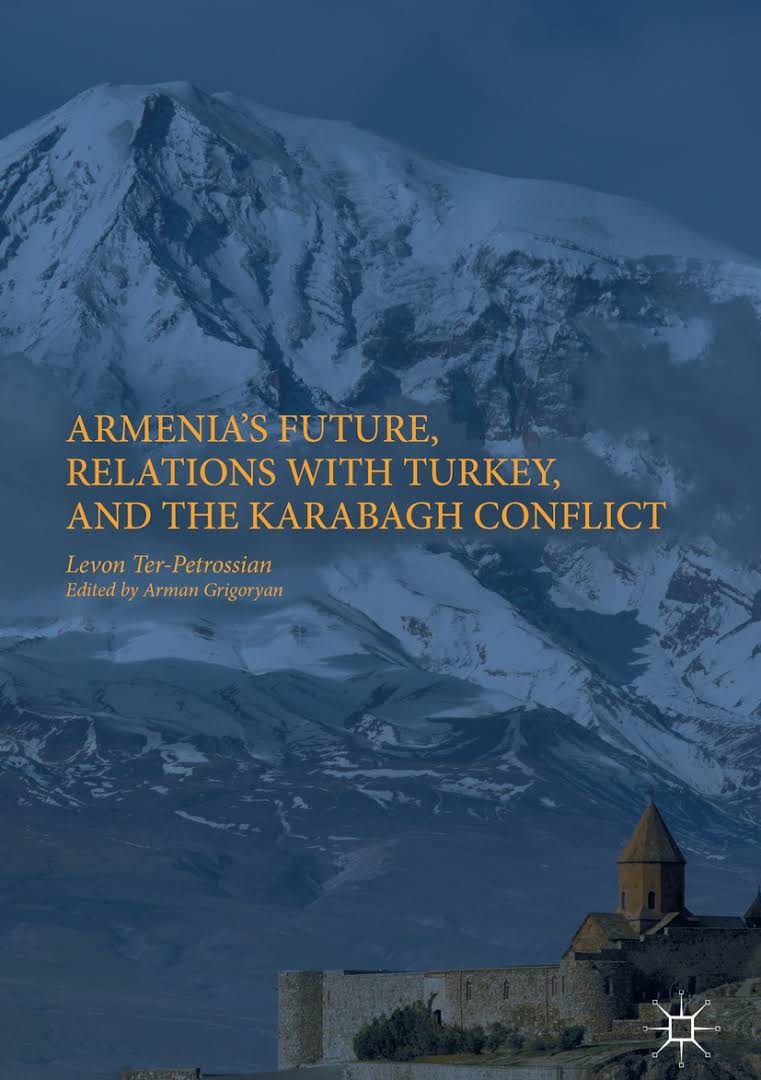 BOOK REVIEW: “ARMENIA’S FUTURE, RELATIONS WITH TURKEY, AND THE KARABAGH CONFLICT”
BOOK REVIEW: “ARMENIA’S FUTURE, RELATIONS WITH TURKEY, AND THE KARABAGH CONFLICT”
Gülperi GÜNGÖR 11.02.2020 -
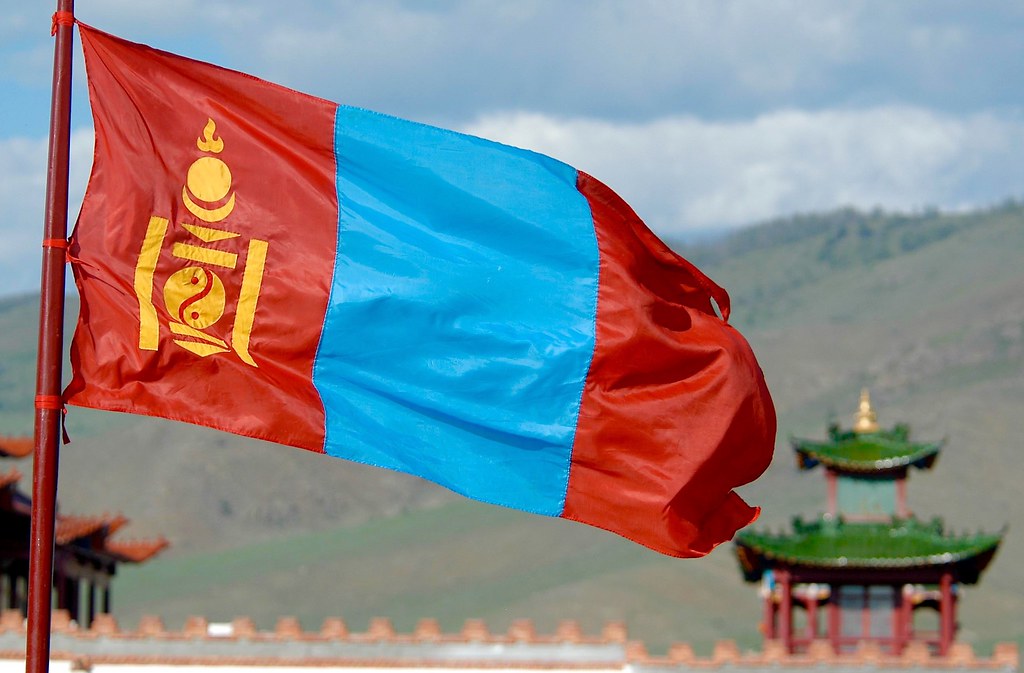 MONGOLIA’S SEARCH FOR BALANCE IN ITS FOREIGN POLICY
MONGOLIA’S SEARCH FOR BALANCE IN ITS FOREIGN POLICY
Gülperi GÜNGÖR 28.08.2020 -
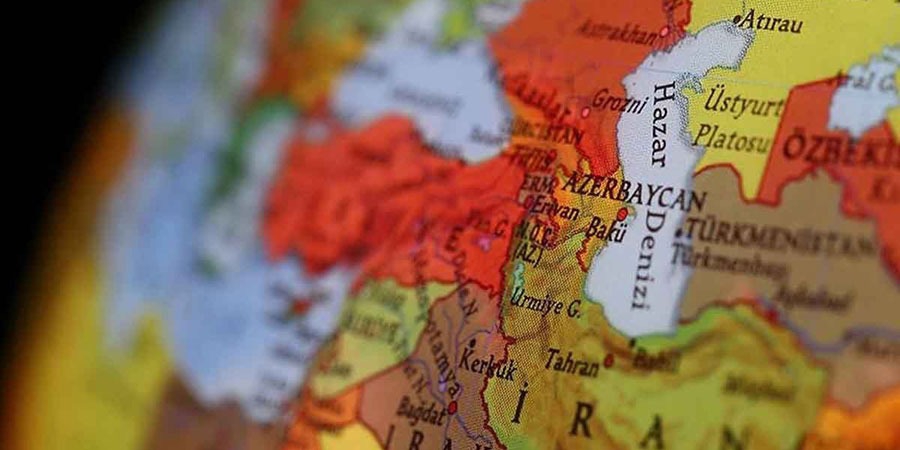 OPPORTUNITIES FOR THE EAST-WEST CONNECTION OVER THE CASPIAN SEA
OPPORTUNITIES FOR THE EAST-WEST CONNECTION OVER THE CASPIAN SEA
Gülperi GÜNGÖR 29.04.2021 -
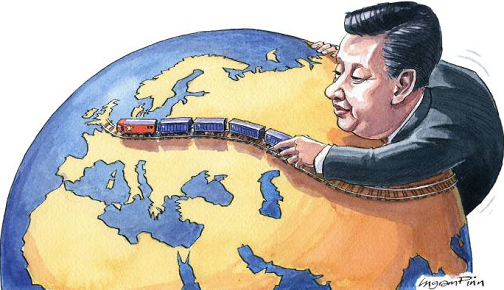 CHINA’S INFLUENCE IN CENTRAL ASIAN TRADE
CHINA’S INFLUENCE IN CENTRAL ASIAN TRADE
Gülperi GÜNGÖR 08.06.2020
-
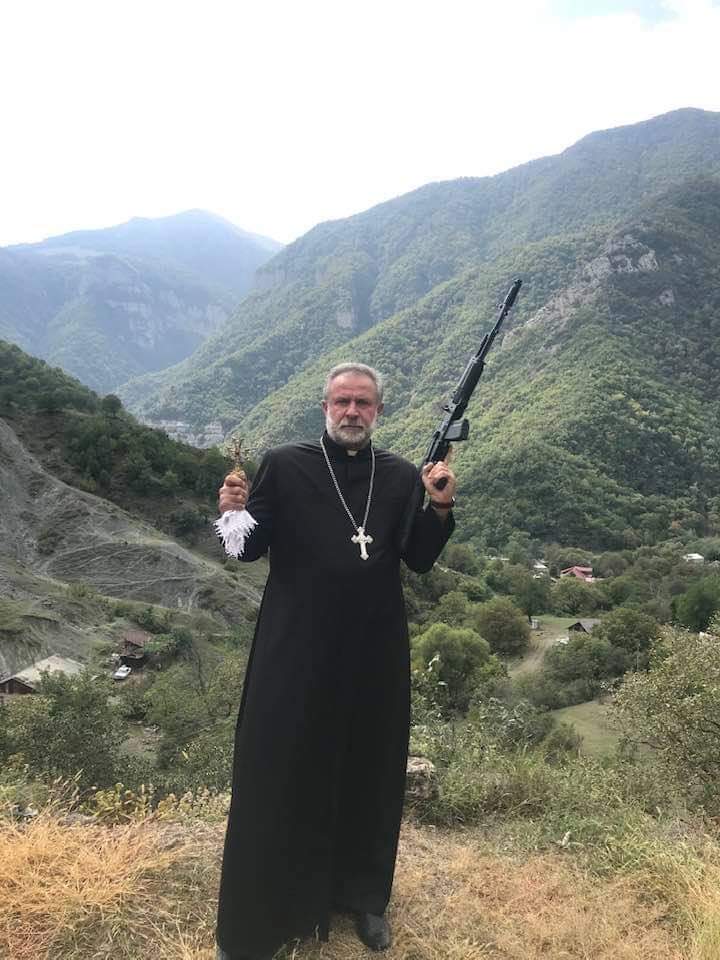 THE RISE OF CHRISTIAN NATIONALISM
THE RISE OF CHRISTIAN NATIONALISM
Mehmet Oğuzhan TULUN 02.11.2022 -
 TÜRKİYE’S CONSTRUCTIVE VISION, EU’S DIVISIVE DIPLOMACY IN BLACK SEA AND CENTRAL ASIA
TÜRKİYE’S CONSTRUCTIVE VISION, EU’S DIVISIVE DIPLOMACY IN BLACK SEA AND CENTRAL ASIA
Teoman Ertuğrul TULUN 21.04.2025 -
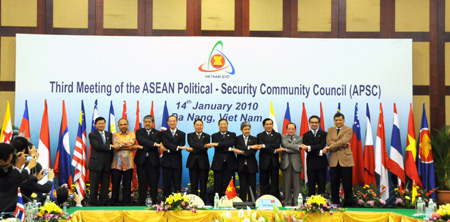 ASEAN’S DEFICIENCY IN DEALING WITH SECURITY ARENA
ASEAN’S DEFICIENCY IN DEALING WITH SECURITY ARENA
Teoman Ertuğrul TULUN 12.11.2018 -
 TURKEY AND THE EUROPEAN UNION
TURKEY AND THE EUROPEAN UNION
Alev KILIÇ 19.11.2015 -
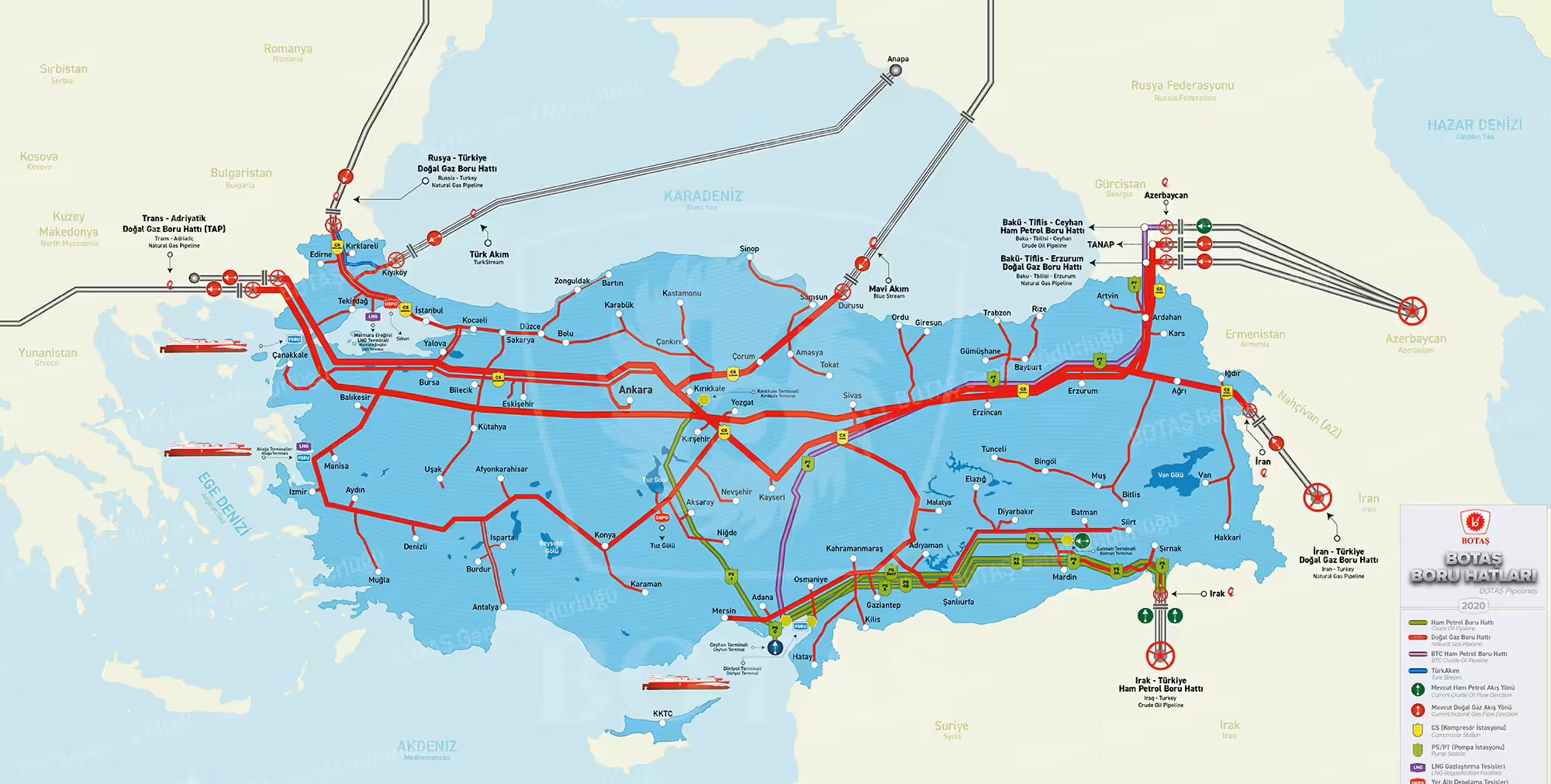 DEVELOPMENTS IN LINE WITH TÜRKİYE’S GOAL OF BECOMING A REGIONAL ENERGY HUB
DEVELOPMENTS IN LINE WITH TÜRKİYE’S GOAL OF BECOMING A REGIONAL ENERGY HUB
Bekir Caner ŞAFAK 24.02.2025
-
25.01.2016
THE ARMENIAN QUESTION - BASIC KNOWLEDGE AND DOCUMENTATION -
12.06.2024
THE TRUTH WILL OUT -
27.03.2023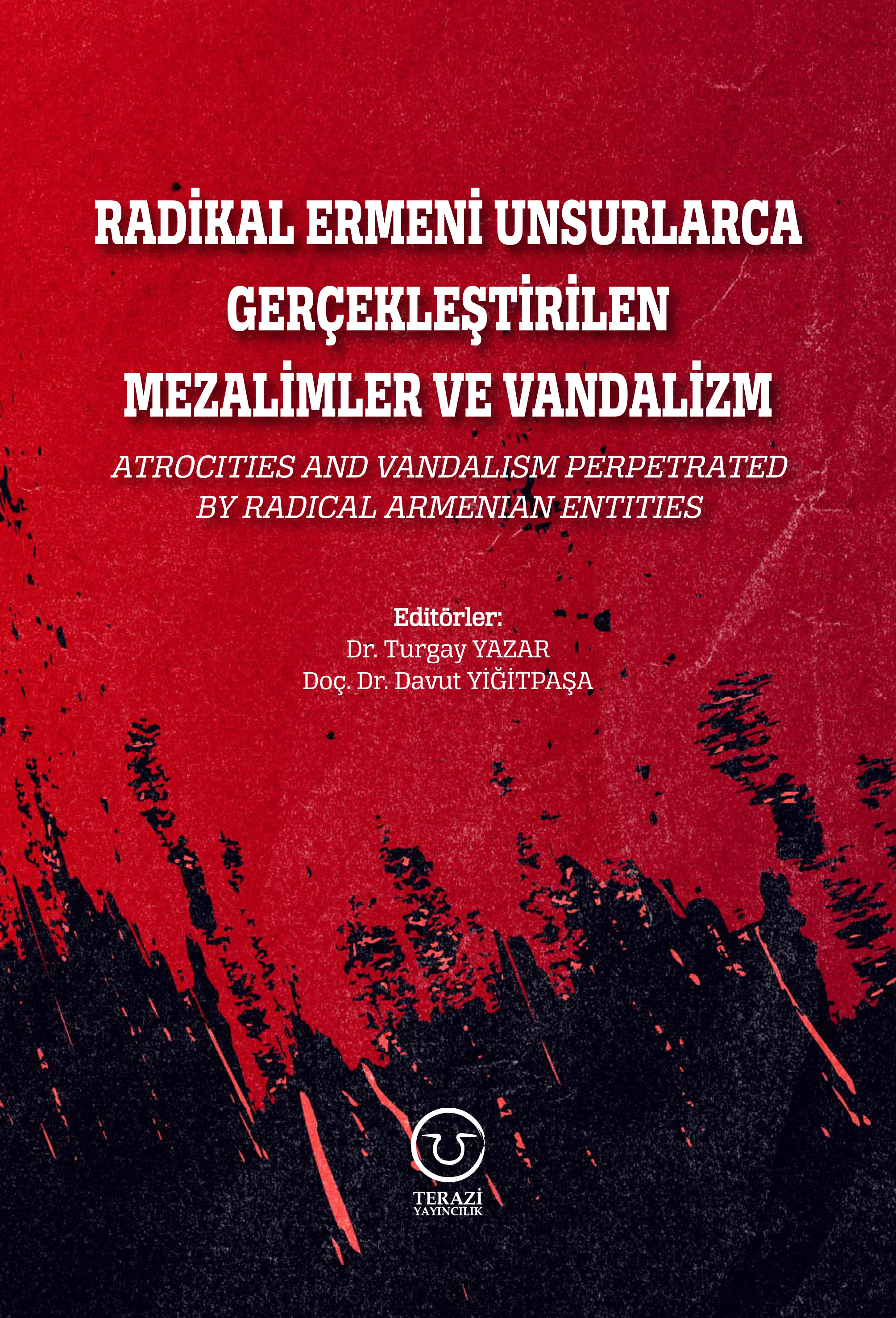
RADİKAL ERMENİ UNSURLARCA GERÇEKLEŞTİRİLEN MEZALİMLER VE VANDALİZM -
17.03.2023
PATRIOTISM PERVERTED -
23.02.2023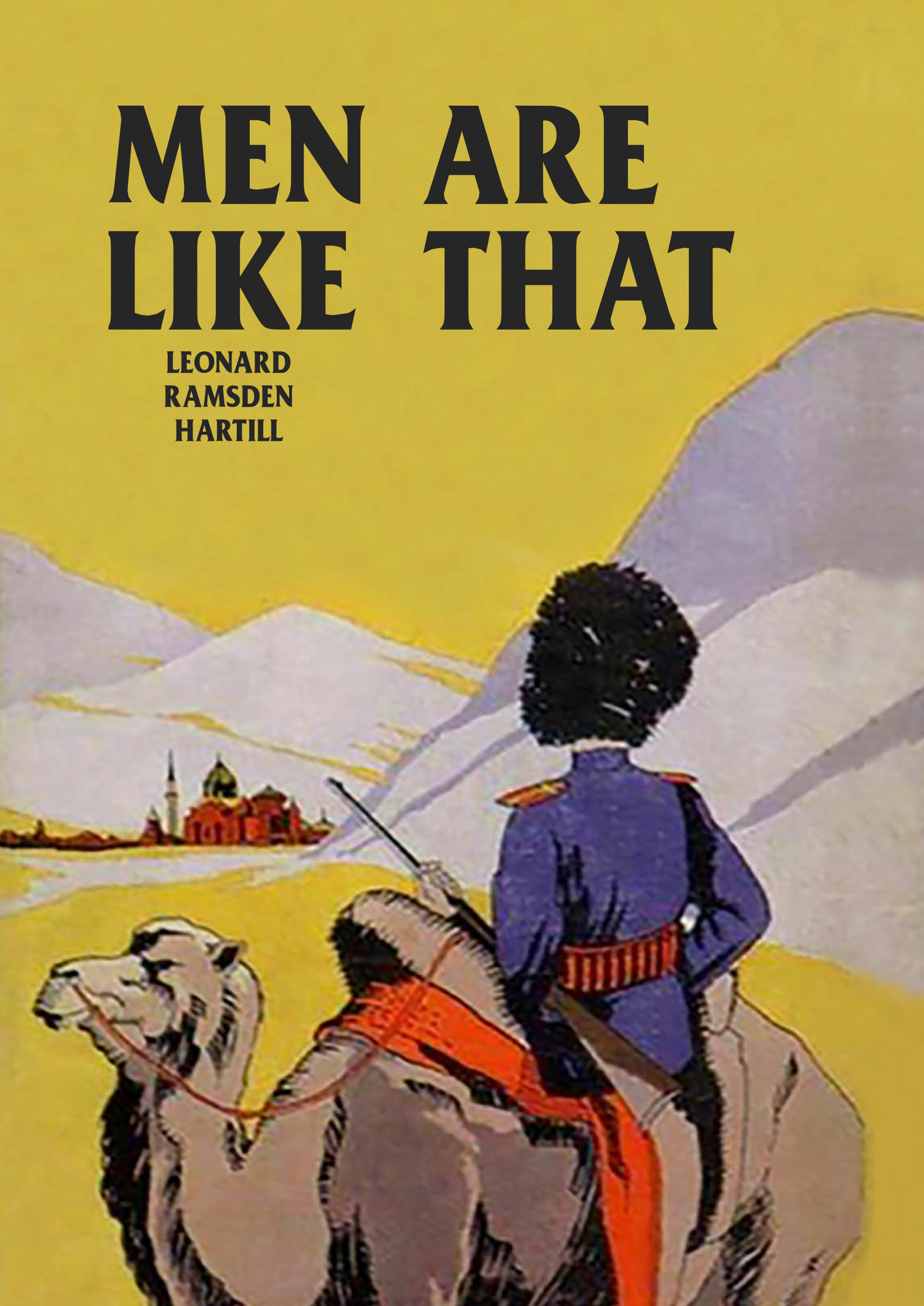
MEN ARE LIKE THAT -
03.02.2023
BAKÜ-TİFLİS-CEYHAN BORU HATTININ YAŞANAN TARİHİ -
16.12.2022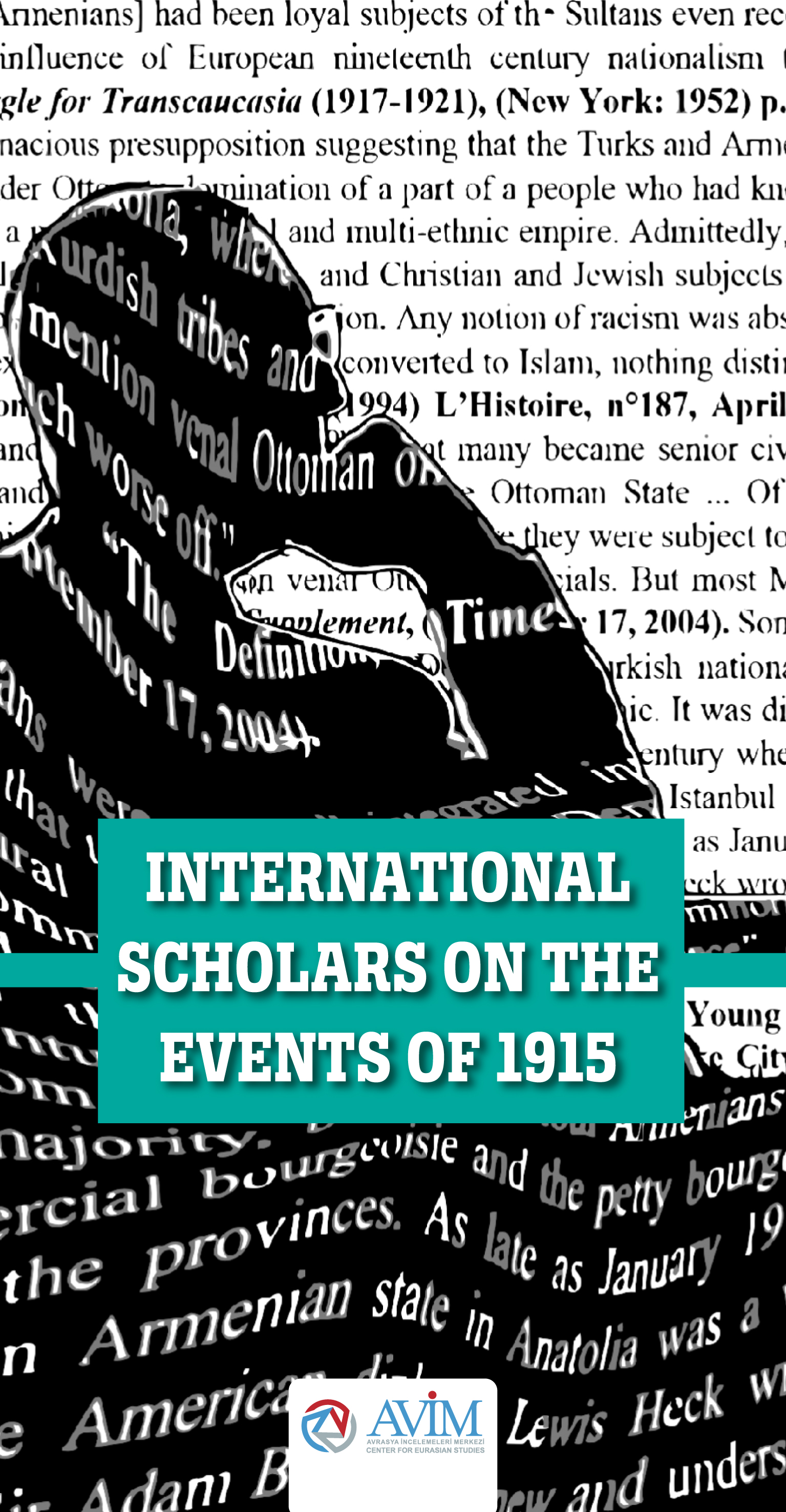
INTERNATIONAL SCHOLARS ON THE EVENTS OF 1915 -
07.12.2022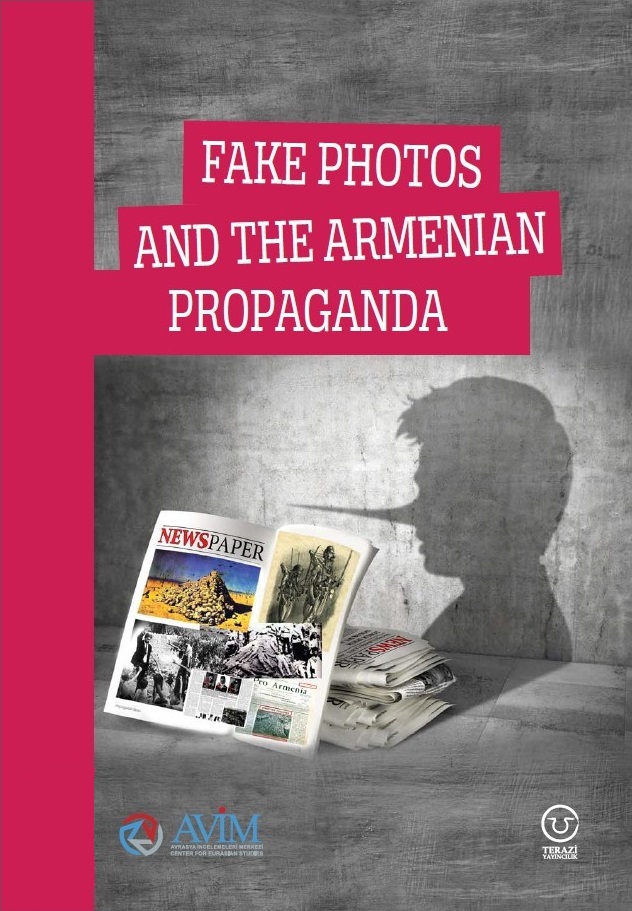
FAKE PHOTOS AND THE ARMENIAN PROPAGANDA -
07.12.2022
ERMENİ PROPAGANDASI VE SAHTE RESİMLER -
01.01.2022
A Letter From Japan - Strategically Mum: The Silence of the Armenians -
01.01.2022
Japonya'dan Bir Mektup - Stratejik Suskunluk: Ermenilerin Sessizliği -
03.06.2020
Anastas Mikoyan: Confessions of an Armenian Bolshevik -
08.04.2020
Sovyet Sonrası Ukrayna’da Devlet, Toplum ve Siyaset - Değişen Dinamikler, Dönüşen Kimlikler -
12.06.2018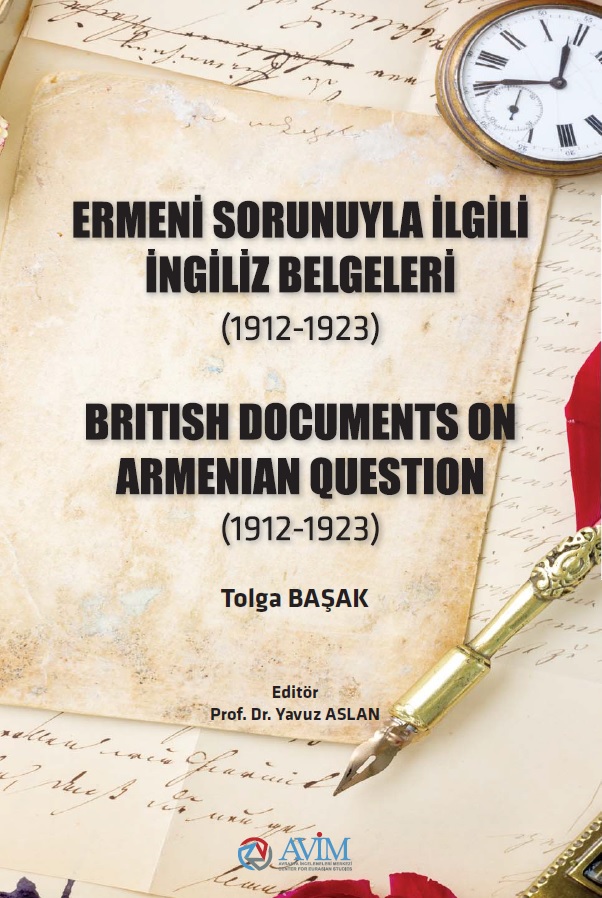
Ermeni Sorunuyla İlgili İngiliz Belgeleri (1912-1923) - British Documents on Armenian Question (1912-1923) -
02.12.2016
Turkish-Russian Academics: A Historical Study on the Caucasus -
01.07.2016
Gürcistan'daki Müslüman Topluluklar: Azınlık Hakları, Kimlik, Siyaset -
10.03.2016
Armenian Diaspora: Diaspora, State and the Imagination of the Republic of Armenia -
24.01.2016
ERMENİ SORUNU - TEMEL BİLGİ VE BELGELER (2. BASKI)
-
AVİM Conference Hall 24.01.2023
CONFERENCE TITLED “HUNGARY’S PERSPECTIVES ON THE TURKIC WORLD"


